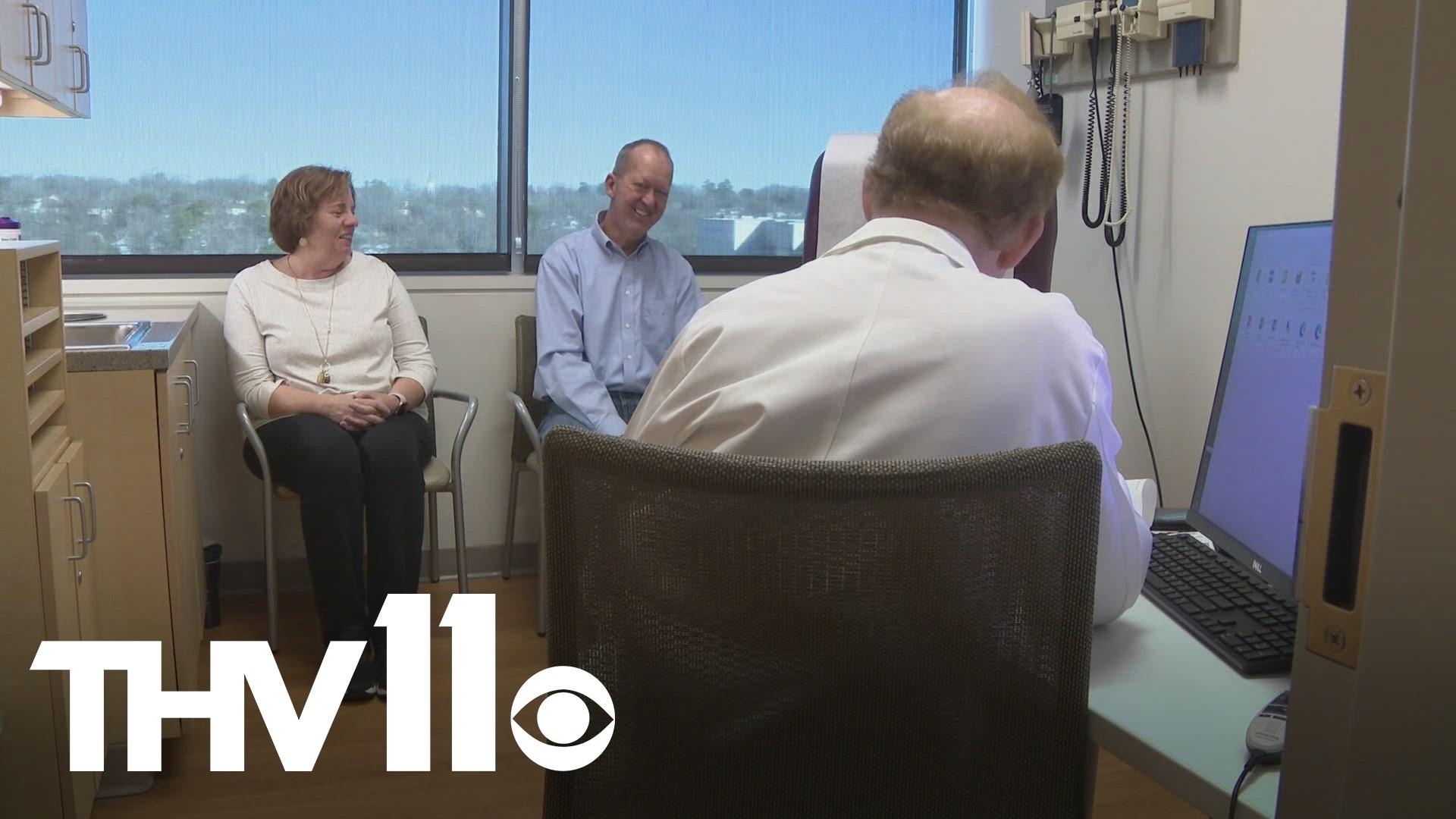LITTLE ROCK, Ark. — On the 11th day of every month, we bring you a new story about a brave patient working to conquer cancer here in the Natural State.
It’s estimated by the American Cancer Society that each year in the United States, around 35,000 men or women will be diagnosed with a rarer form of cancer called multiple myeloma.
Multiple myeloma affects white blood cells and causes cancerous plasma cells to build up in the bone marrow.
The UAMS Myeloma Center in Little Rock is an international leader in the treatment and study of multiple myeloma and related illnesses.
When 62-year-old Jim Schepers of Grand Rapids, Michigan learned in 2007 that he had multiple myeloma, he asked his medical providers where to go for the best possible outcome— and their answer was Arkansas.
"We asked them, where do we go to really chase after this because my wife and I were both young, our kids were young. And one of the doctors there said Little Rock is three to five years ahead of the rest of the world," Jim explained. "[He said] 'If it was me, I’d go to Little Rock.'"
The Myeloma Center is located within the UAMS Winthrop P. Rockefeller Cancer Institute. Around 600 patients are seen there each month, coming from all corners of the nation and even as far away as the Middle East and South America.
Jim began his treatment there not knowing what would happen. He soon met world-renowned cancer treatment and research specialist, professor, and clinical director of the Myeloma Center, Dr. Frits Van Rhee.
He explained the appeal of being able to receive care from such a globally recognized institution.
“We’ve been treating myeloma since 1989. We have a very long history. I think with existing therapies, about 30% of our patients are long-term and do not relapse," Dr. Van Rhee said.
He also mentioned that the center has performed more stem cell transplants than almost any other. He has high hopes for future success using immunology, where a patient’s own blood can be infused with antibodies to kill myeloma cells while leaving healthy cells alone.
His inspiration to become a myeloma specialist stems from losing his father to the disease when Dr. Van Rhee was in medical school. Since then, he's taken great pride in seeing patients thrive after treatment.
“I’m very aware that behind every patient is a real human being," he said. "It gives me satisfaction to be able to live to deliver good treatment and to help patients live longer, better lives with their disease.”
Jim Schepers and his wife met with Dr. Van Rhee for a checkup recently— and after 16 years, Jim said he is feeling well. He also added that he’s grateful for the advances being made in myeloma treatment and he hopes other patients who suffer from it can find the same quality of care he received from the UAMS Myeloma Center.
He has this advice to others like him, “Number one, don’t give up. It is treatable and in many instances, it’s becoming curable. It’s a nasty little disease. If you can, come to the Myeloma Center. Please, do."

